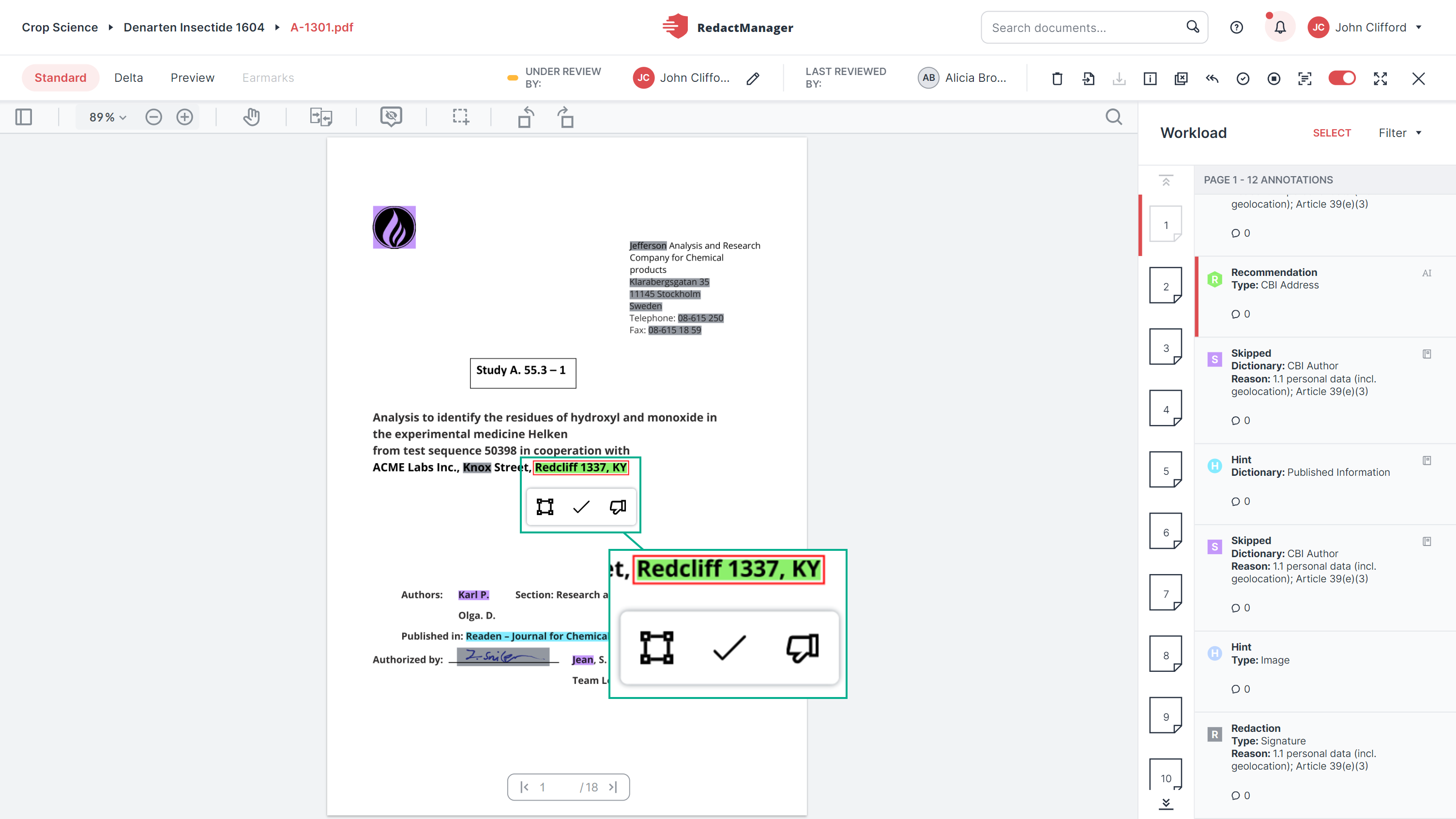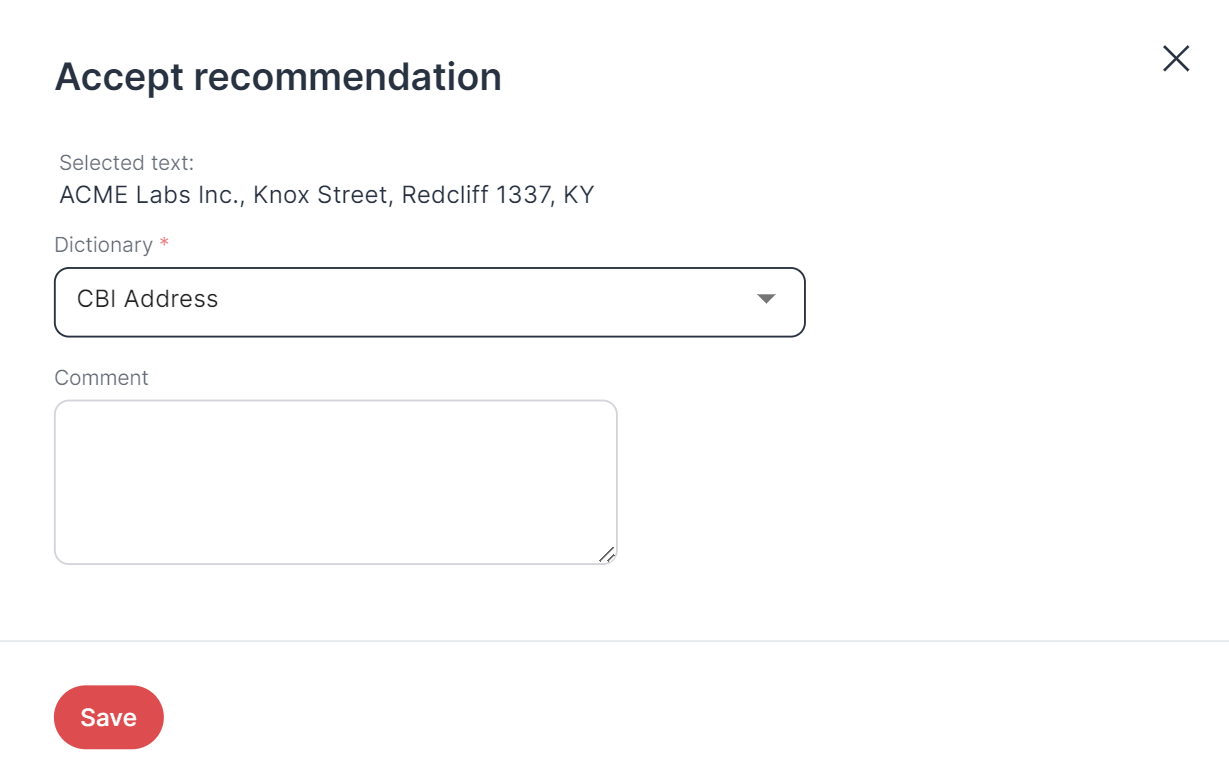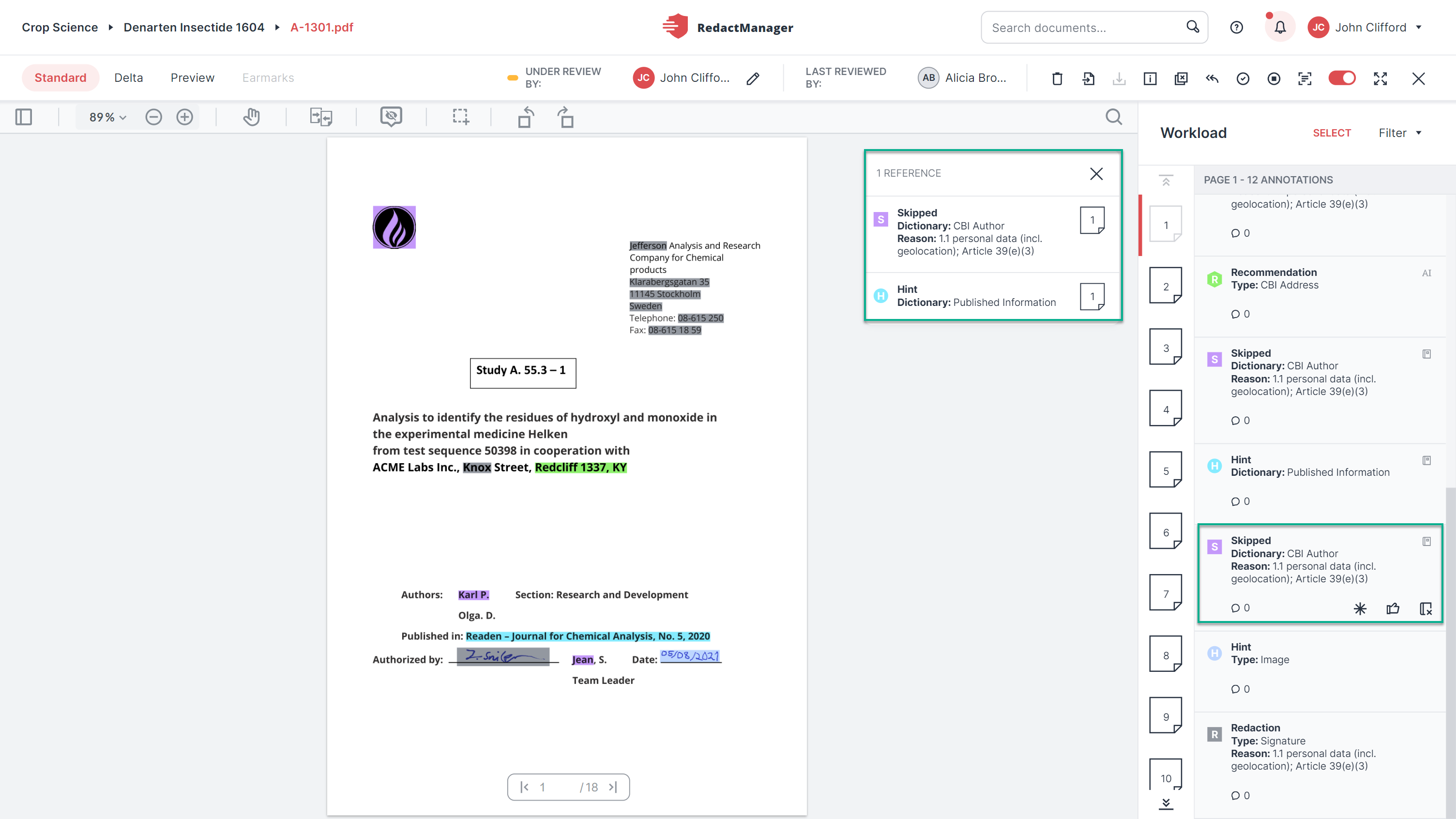Hints, images, and recommendations
Hints provide helpful information. The respective text passage will not be redacted, however.
Typical applications:
Hints pointing to publicly available information:
These hints show you that a certain piece of information has already been published and therefore does not need to be redacted. For example, the rules can specify that author names are not redacted if they appear in the same section as published information. The authors' names are then provided with a reference to the publication.
Hints on images:
Images that are not redacted are marked with a hint. (For detailed information regarding images, please see below.)
Click on a hint in the document or the Workload to edit it.
Depending on the type of hint and the rules that have been defined, the following editing options are available:
Resize icon
:
Change the size of the redaction.
Recategorize
:
You can manually change the category of an image. That is useful if the category cannot be identified clearly.
Click on the icon. The "Edit Image Type" dialog opens. Select the correct image category, and add a comment if you wish.
Remove from Dictionary
:
The hint will no longer be placed in the future, and will be removed from all active dossiers that apply the respective dossier template.
Before selecting this option, please remember that text passages marked with a hint will not be redacted in the final document anyway. However, the hint might be helpful in future occasions.
Remove hint only here
:
Remove the hint from this text passage only.
Hide
:
Hide the respective marking in the document. Click the Show icon
to display it again.
Good to know:
RedactManager does not always display all the editing options. In case of dictionary-based hints, you can choose from other options than in case of rule-based redactions.
RedactManager distinguishes the following image categories:
Chemical formulae, logos, and signatures: Rules have been defined for these image types. Whether these images are redacted or skipped depends on the rules that have been defined.
Other images: RedactManager currently distinguishes between:
OCR: images that have been converted to text by automatic text recognition. Images in this category do not need to be redacted.
Other images: This category includes all images that do not fall under the previously mentioned categories. Images in this category do not need to be redacted. However, it is recommended to check these images and see if there is any reason for redacting these images.
How to edit an image redaction:
Click on an image redaction in the document or in the Workload to edit it.
The following editing features may be available:
Resize
:
Change the size of the redaction. Confirm by clicking the checkmark icon.
Edit
:
Change the redaction reason and leave a comment if you wish.
Recategorize
:
You can manually change the category of an image. That is useful if the category cannot be identified clearly.
Click on the icon. The "Edit Image Type" dialog opens. Select the correct image category, and add a comment if you wish.
Remove only here
:
Remove exactly this redaction. Other instances of this image will be redacted.
Hide
:
Hide the marking that is placed over the image for better visibility. Click the Show icon
to display the text marking again.
In the case of OCR hints, Hide is enabled by default.
RedactManager generates redaction recommendations based on the rules defined in the dossier templates and the results of the AI models.
AI-based results are always labeled as recommendations. You decide which of the AI-based redaction recommendations you want to accept.
How to edit a recommendation:
Click on the recommendation in the document or in the Workload:
The following editing options may be available in case of recommendations:

Recommendation
Resize icon
:
Change the size of the redaction.
Accept
:
If you accept a recommendation, the respective text passage will be redacted.
Click on the icon. The "Accept recommendation" dialog opens. Decide whether you want to add the relevant term to the suggested dictionary or select a different dictionary from the drop-down menu.

Accept recommendation
No action is required in case you do not want to implement a recommendation. The text passage will not be redacted as long as it is flagged as a recommendation.
False-positive
:
You no longer wish to receive this recommendation in a similar context.
References provide an overview of connections between annotations that can be related due to the underlying rules.
They will only be displayed if the rules are configured accordingly.
Typical use case:
Hints pointing to publicly available information result in redactions in the same paragraph being turned into Skipped Redactions because it is assumed that the information is publicly known and there is no need for redaction.
How to open the references:
Select a Skipped Redaction.

Reference for skipped redactions
Click the See References icon .
A small list appears to the left of the Workload. It shows all annotations that are related to the annotation: the hint on publicly available information and the redactions that have been skipped for this reason.